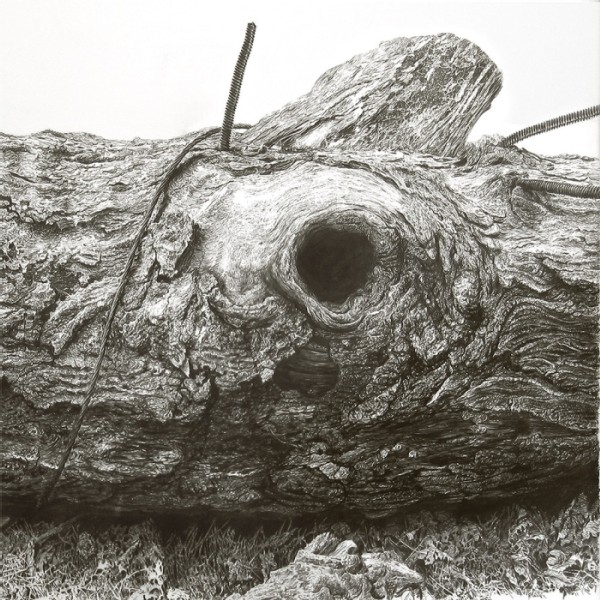“Consider all this; and then turn to the green, gentle, and most docile earth; consider them both, the sea and the land; and do you not find a strange analogy to something in yourself?” —HERMAN MELVILLE, Moby Dick, 1851
Moby Dick. Once Rick Shaefer mentions this, it’s hard to unsee a leviathan in his enormous White Oak. Everything is there: the massive weight, the haunting eye, the harpoons and cables, and of course, more cryptically, the symbolic import.
The triptych, spanning nearly 17 feet, is a beautifully rendered charcoal drawing on synthetic translucent vellum. When seen from a distance, it is a lifelike homage to nature, a tour de force of realistic rendering. But upon closer inspection, the massive drawing is actually a lyrical symphony of loose gestural marks. The charcoal lines dance across the surface with a lively spontaneity. There is a dualistic magic to the drawing: it is at once a tightly rendered depiction of a fallen tree, and at the same time an intimate reflection of the artist’s physical act of line-making.
As Shaefer explains, “If things are working, I hurriedly scribble with a writer’s hand in a spontaneously invented language with looping cursive gestures, larger flourishes, and tight punctuations. If the rhythm is there, you find yourself writing your way across the surface as if capturing thought in a frenzied rush of note taking.”
White Oak is far more than a drawing of a fallen tree on the forest floor. In some ways, it is a map of our world. Rick Shaefer may be reached through his website and through Instagram: @Rick Shaefer. He is represented by the Sears Peyton Gallery in New York City. An exhibition of his recent work, Refugee Trilogy, will be at the Hand Art Center / Stetson University, Florida, from August 16 through October 14, 2019.


